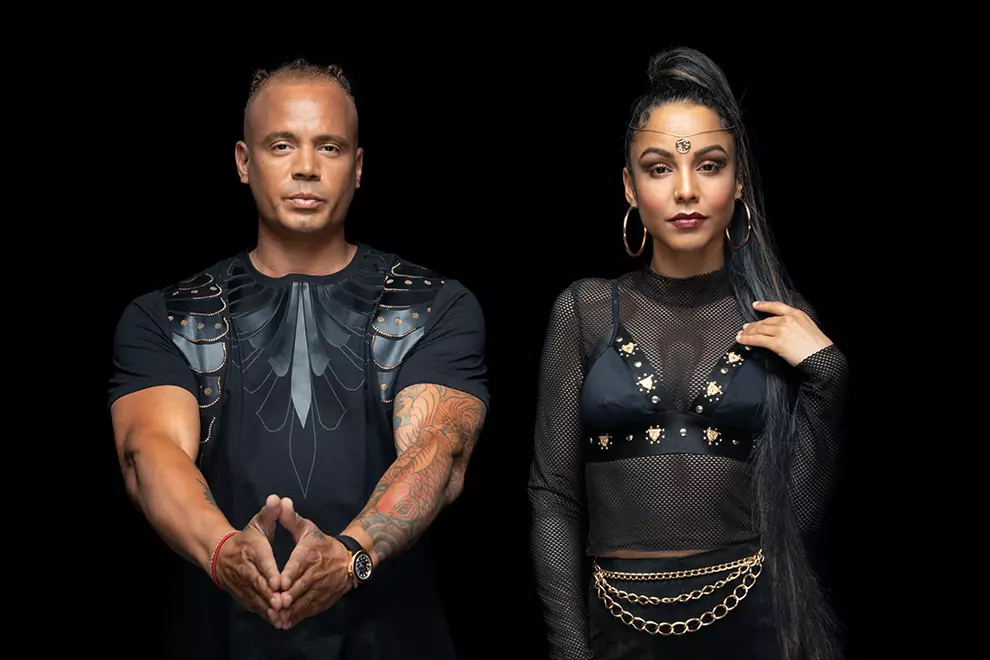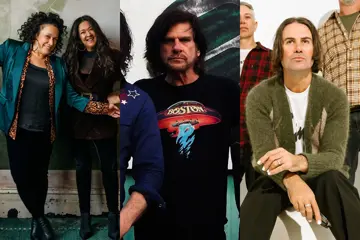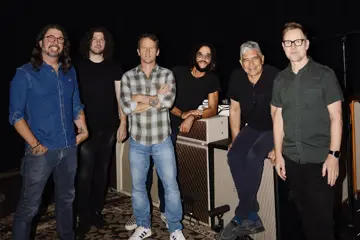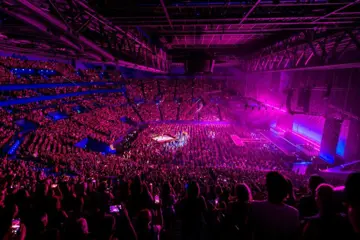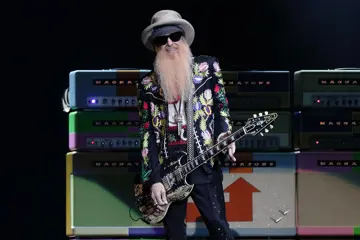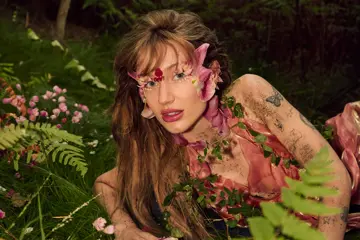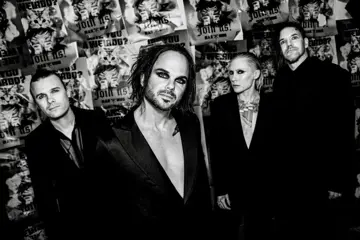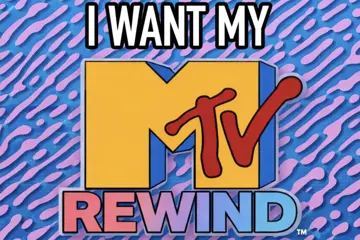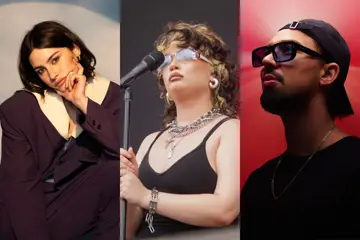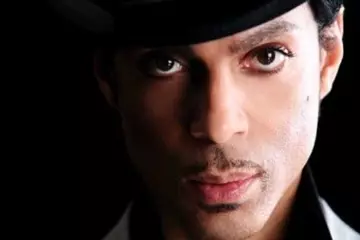 2 Unlimited
2 UnlimitedIt was early in the 90s when Eurodance started to make its mark on Australia. The underground that had been building for decades began to go mainstream. In Europe and the UK, pop and dance started to melt together, but it was to everyone’s surprise that the first place outside the continent to embrace the craze was on the other side of the world.
SETTING THE EDM SCENE
Australia’s underground club scene had been bubbling along throughout the 80s, with underground 12” vinyl bubbling up from underground DJs into mainstream culture. The rise of stores like Central Station Records, which went from being an indie Melbourne store to opening a Sydney presence in 1987, was both a symptom and a driver of the scene from the underground to the mainstream.
The rise of the CD pushed vinyl and turntables squarely into the clubbing underground, creating a vibrant and exciting “other” for music lovers drawn towards electronic music.
By 1989, Central Station had stores across all the major capital cities and was avidly importing music from across the globe to feed the scene. Major labels joined in the act and began releasing dance records from Europe which seemed to kick off in Australia more than in other places, kicking its way out of the clubs and onto the radio.
A few early breakout hits like Technotronic’s Pump Up The Jam proved that Australia was a good hunting ground for European dance artists, and the major labels started exporting more dance tracks, particularly those that were working in the UK.
EARLY 90S UK HITS
Don't miss a beat with our FREE daily newsletter
Australia embraced more underground UK dance hits as the rise of Eurodance continued. Starting the trend, and indeed the decade, was Guru Josh’s Infinity (1990s Time For Guru). The iconic sax line weaved its way across New Year’s parties across Australia and Europe (and those that weren’t playing that were probably stuck on Technotronic).
The K.L.F. were next off the production line, smashing the Australian charts with a string of chart hits from their White Room album… all created with ‘The Manual’ (but that’s a whole other story). They used the star power of Tammy Wynette in Justified and Ancient, continuing to broaden the church of people embracing and understanding electronic genres.
Artists like The Shamen also found success in Australia early, with Ebeneezer Goode cracking the Australian top 20 with its “E’s Are Good” chant. A cooked club version of the Sesame Street theme song (titled Sesame’s Treet) was also a top ten hit in Australia for the Smart E’s (spawning a whole electronic genre ‘toytown techno”), proving that the Australian mainstream was far more open to new sounds than its US counterpart. And seemingly love ecstasy references.
RISE OF THE EURODANCE DUO
In 1991, the eurodance duo formula was solidified, with the undisputed kings 2 Unlimited spearheading the genre. Exploding onto the scene with Get Ready For This, the song was originally an instrumental created by producers Jean-Paul De Coster and Phil Wilde. When the track dominated the clubs, the duo created the ‘face’ of 2 Unlimited, with vocalist Anita Doth and rapper Ray Slijngaard fronting the act.
The band dominated charts around the world, selling over 18 million records and had an incredible run of hits in Australia, including further top 20 hits Twilight Zone, The Magic Friend, No Limit and Tribal Dance. No Limit was a global smash and continues to be a staple in clubs (and on Coles Radio) to this day.
The formula was so successful that it was replicated time and time again, echoing in a three-year period of copycats that dominated charts across Europe….. And Australia.
Australia’s second most successful duo was Culture Beat. This time from Germany, fronted by Jay Supreme and Tania Evans, but initially the brainchild of producer Torsten Fenslau. Their debut album Horizon didn’t impact in Australia, but by 1993 the Eurodance craze was well and truly taking hold. Their single Mr Vain was a #1 hit in Australia, the first Eurodance tune to reach Australia’s chart summit and one of the biggest hits of the year.
Twenty 4 Seven were another duo that rode the wave of 2 Unlimited into the charts. Slightly more pop-oriented, the band hit #1 in Australia with Slave To The Music. As with Culture Beat, the band had a previous album in Europe that was successful, but the times were right in 1993, and with a lineup change, the band cracked it down under. Their follow-up, Is It Love, also cracked the ARIA top 20.
But it didn’t stop there, with many duos jumping on the bandwagon. Bands like A.B. Logic started emerging, with producers seemingly throwing tracks against the wall in Australia to see what would stick. The Hitman was indeed a hit…. but only here in Australia, which was even bigger than in their homeland Belgium.
The last BIG Eurodance duo actually wasn’t a duo— The Real McCoy was actually a quartet but adhered to the male rapper / female vocal recipe. In fact, we’re not quite sure what the other two did. The band exploded out of the gates with an Australian #1 single, with Another Night and were one of the last formula bands to cross over. They had subsequent hits with Run Away, Automatic Lover, Come and Get Your Love and One More Time. As they got more desperate in the late 90s, they turned to covers, making appalling attempts at Shania Twain’s (If You’re Not In It For Love) I’m Outta Here, and La Tour’s People Are Still Having Sex.
EURODANCE POP COVERS
As the duo wave broke, so did the cover versions. The first to impact Australia was KWS’s version of KC & The Sunshine Band’s Please Don’t Go in 1992. Originally covered by Double You, a record company fight saw the KWS version hurriedly put together as a copycat, and in Australia, it was the copycat that ended up with the hit.
By this time, the covers kept flowing with an Australian #1 for Danish group Cut N Move who had a crack at another KC & the Sunshine Band hit Give It Up. Once again, the song was only really big in their native Denmark…. and here in Australia.
By now, smaller record companies were cottoning on the idea that Australia’s love for Eurodance was here for the taking. In 1994, fledgling indie label Shock Records licenced UK artist Nicki French’s version of Bonnie Tyler’s Total Eclipse Of The Heart, again taking an unknown artist with a great cover to the ARIA #1 position.
It seemingly didn’t matter about the artist anymore, with Newton also emerging in 1994. Newton was so unknown outside of Australia that he still retained his day job as a fireman back in the UK when he hit the top ten here with Jigsaw’s Sky High. He repeated the feat with an equally awful attempt at Sometimes When We Touch…. which once again gave him an Australian hit but didn’t make an impact anywhere other than down under.
EURODANCE GOES NOVELTY
Once it was clear that Australia didn’t need to rely on proven hits from anywhere else, search for the next Eurodance hit spawned its own indie ecosystem. Apart from Central Station, companies like Colossal, Shock, Possum, MDS and even Dino started grabbing whatever Eurodance material they could licence, running it up the flagpole to see what could stick in Australia. Artists like Amadin, Def Dames Dope, DJ Bobo and more spearheaded the wave of tunes that later in the 90s would become the fodder for Wild FM. Some of it was trash, but some of it gave us some unique hits that left the rest of the world scratching its head.
The biggest of these was Hocus Pocus’ Here’s Johnny. The track wasn’t a hit anywhere else in the world. The video clip is rumoured to be a computer screensaver recorded at the Australian record company’s office to give Rage something to play. Despite that, the Dutch song which sampled Jack Nicholson in The Shining was a platinum ARIA #1.
Hocus Pocus didn’t have another hit, but the producers behind it went on to form another “band”, Doop. This time the band cracked a UK #1 with their eponymous hit Doop which sampled 40s ragtime, thanks to the confidence from Here’s Johnny. Thanks, Australia.
Also in 1995, German producers found an old scat jazz musician and turned John Larkin into Scatman John, blasting charts across the world and hitting Australia’s top 10.
Triple J helped along Technohead’s I Wanna Be A Hippy, a happy hardcore gem chanting, “I wanna be a hippy, and I wanna get stoned on marijuana", giving it constant rotation and giving it both ARIA and hottest 100 chart placement.
Italian dance act FCB didn’t have a lot of success, even in Europe, but when they released their song Excalibur, it raced up the Australian charts, lodging at #2. Based on the classical song O Fortuna, this dance version was one of the biggest hits of the year. Curiously, we can’t find any record of the song being released anywhere outside of Australia… yet another curious historical footnote in this Australian Eurodance phenomenon.
Where novelty finally reached its peak was with Rednex’s Eurodance / country music mash-up on Cotton Eye Joe. Depending on your view, either the height or the nadir of the Eurodance craze, Rednex continues to this day, releasing clone after clone of this track, hoping for the same result…. but were they the pioneers of country/techno?
AUSTRALIAN EURODANCE
Australia had its own scene of dance musicians, with Volition Records the biggest purveyor of Australian electronic. Most of it was too good to be mentioned in this article, with songs like Itch E & Scratch E’s Sweetness and Light genuinely taking the genre forwards, but wherever there’s a success, there are acts trying their hand at the formula.
Australia was, in fact, one of the first to mesh dance music and country, with Audio Murphy Inc teaming up with Melinda Schneider a full three years before Rednex emerged with this cracker, Tighten Up Your Pants. Rumour has it that it’s actually Melinda’s Mum, Mary doing the yodelling. Not sure if we can thank this track for the emergence of Rednex or whether we can just blame them for this song, but either way….
As the Eurodance duo craze reached its peak, Australia had its own version— only this time a trio— in the form of Culture Shock. Dance scene stalwart Paul Brandoli was the rapper and producer, and the band had two top 40 Australian hits, Satisfy the Groove and My Enemy. Brandoli went on to form another band Eclipse who had even more success with their cover of ABC’s The Look Of Love.
The height of Australian dance, though, we think has to be awarded to the Australian group Southend featuring Nik Fish, who in 1994 remixed Juan Antonio Samaranch’s speech awarding the 2000 Olympics to Sydney. It’s hard to imagine having a top 10 hit with this today, but what a time we were living in.
RUDE EURODANCE
As the Eurodance craze continued, we went from novelty into crass plays for the twelve-year-old boy market. And to great effect!
Twenty Fingers had a great run with their song Short Dick Man, which was the bane of every parent’s existence as it blared out of every teenager’s Walkman. It was a very simple track, but you couldn’t keep this one down. Sorry.
Even bigger (sorry) was this global phenomenon. Smokie’s Living Next Door to Alice was reworked in the UK by a producer who used the original and inserted “Who the f*ck is Alice” in the chorus and released it under the name Gompie. It was a huge hit over there, but here in Australia, we were in the midst of a Eurodance craze, so it made sense that we’d embrace the Eurodance rip-off instead. The Steppers (who never had another song, let alone another hit) had a platinum #2 ARIA hit.
Germany also threw up (literally) E-Rotic, a dance act specialising in sex songs. Big, particularly in Japan and Finland, the band are still going today. With hits like Fritz Love My T*ts and Oh Nick Please Not So Quick, you know what you’re getting. Here in Australia, the only song we embraced was Max, Don’t Have Sex With Your Ex, so maybe we ARE more cultured after all? Maybe.
If teenage boys still hadn’t had their fill of audio brilliance, The Outhere Brothers emerged in 1994 with their first of several hits Don’t Stop (Wiggle Wiggle). Their biggest hit in Australia was Boom Boom Boom, but it was the explicit version of their album that was the must-have in playgrounds around Australia. You can listen to the track if you really want to, but with tracks like Bring That Ass Over Here, Golden Shower, Orgasm, I’ll Lick Your P*ssy and their classic F*k U In The A*s, you kinda know what you’re into. With that, the Eurodance wave had broken, and there was nowhere else to go.
THE GOOD EURODANCE
So we’ll admit… there’s been some trash here. And it didn’t get better. We’ve stopped our Eurodance train in 1995, but the genre continued to spin out into the EDM we love today, some good, some bad and some we all wish were buried. But the early 90s had some banging Eurodance hits that we still think stand up today.
U.S.U.R.A - Open Your Mind
Italian dance act released through Deconstruction. Despite only reaching #29 here in Australia, it stuck around the charts for months and was one of the top 100 sellers of 1992.
Haddaway - What It Love
Haddaway is still kicking around today, making music. This one is still a staple on Australian radio and has recently been redone by David Guetta. It’s the original that’s the classic, though.
Utah Saints - Something Good
There’s something about this track that can’t help but get you on your feet. It’s the crowd noise, the chanting of their own name…. get me to the club now.
JX - Son Of A Gun
JX is a British DJ who now goes by the name of Rex The Dog and is still doing records. As JX, he released four singles, including other Australian hits, There’s Nothing I Won’t Do, and You Belong To Me. Both also bangers.
Motiv8 - Rockin For Myself
There was hardly a dance hit in the mid-90s that wasn’t remixed by Motiv8. Hits like Mozaic’s Nothing in the World and Crush’s Jellyhead were turned into hits by Motiv8, and he even had a crack at the James Bond Goldeneye theme. This was the biggest hit under his own name (well, his own name was Steve Rodway, but you know what we mean). He was also at the height of his popularity around 1995 when we leave this love letter to Eurodance. Perhaps the latter half of the 90s is a story for another day.
STILL WANT MORE? CHECK OUT OUR EURODANCE SPOTIFY LIST:

